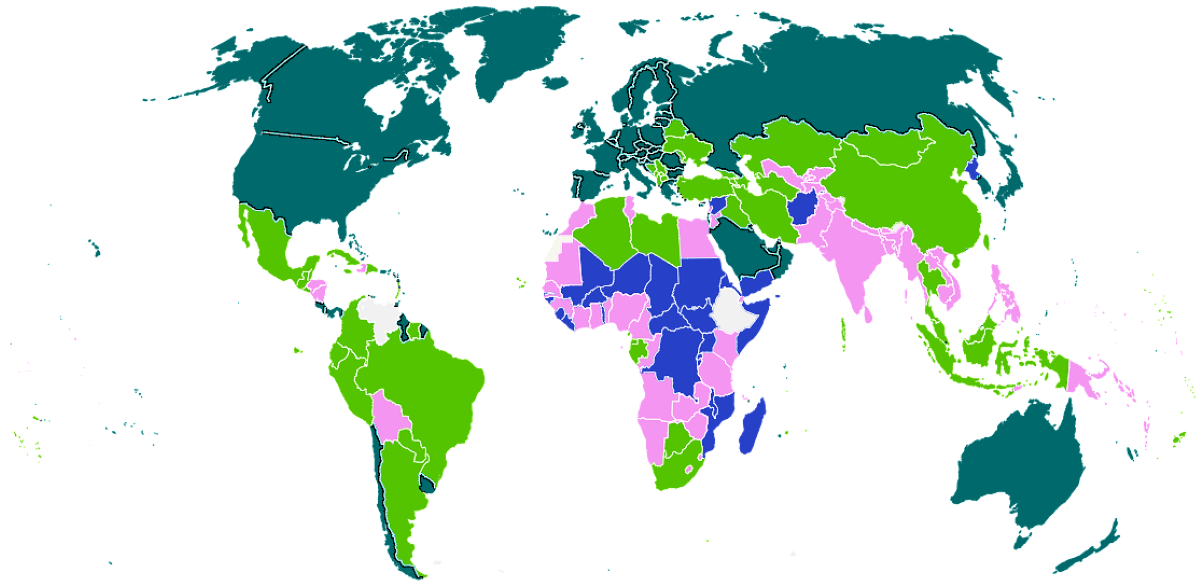Kenya and Tanzania maintain Lower-Middle Income Status in the latest World Bank Group Ranking
Tanzania has maintained its lower middle income status in the latest World Bank’s country income classifications for Fiscal Year 2026
Same case applies to Kenya, which is also categorized as a lower middle income nation for the financial year starting July 1, 2025 to June, 2026.
Kenya and Tanzania are the only Lower-Middle income members of the East African Community.
Burundi, DR Congo, Rwanda, Somalia, South-Sudan and Uganda have all been graded as Lower Income countries.
The World Bank Group country income classifications for FY26 (July 1, 2025–June, 2026) has however not categorized Ethiopia, which remains unclassified.
It is only Algeria, Botswana, Gabon, Libya and South Africa that have been classified as Upper-Middle Income countries, the highest category that Africa has managed to achieve in Fiscal Year 2026.
Every year, the World Bank Group classifies the world’s economies into four income groups: low, lower-middle, upper-middle, and high.

These classifications, updated each year on July 1, are based on the previous year’s Gross National Income (GNI) per capita, expressed in U.S. dollars, using the Atlas method.
The updated country income classifications for Fiscal Year 2026, based on the Atlas Gross National Income (GNI) per capita of 2024, reveal shifts due to changes in Atlas GNI per capita and classification thresholds.
These thresholds are adjusted annually for inflation using the Special Drawing Rights (SDR) deflator.
Often the thresholds go up with this adjustment, however occasionally, including this year, the thresholds have moved down slightly due to the appreciation of the U.S. dollar versus other currencies.
The Importance of Income Classification
A country’s income classification not only reflects its level of development, but it also has the potential to influence its development trajectory. It affects eligibility for official development assistance and concessional financing.
Evolution of Income Classification
Since the late 1980s, the classification of countries into income categories has transformed. The number of low-income countries has steadily declined, while the number of high-income countries has increased.
This shift reflects broader global economic developments, including sustained growth in many developing countries, greater integration into the global economy, and the effects of policy reforms and international organizations’ support.
In 1987, around 30 percent of reporting countries were classified as low-income and 25 percent as high-income countries.
By 2024, these ratios shifted to 12 percent low-income and 40 percent high-income.
Regional Progression
The shifts in income classification vary significantly across regions:
East Asia & Pacific: In 1987, 26percent of countries were low-income; by 2024, only 3% remained in this category.
Europe & Central Asia: No low-income countries in both 1987 and 2024, with a slight decrease in high-income countries from 71 percent to 69percent.
Latin America & the Caribbean: Low-income countries reduced from 2 in 1987 to 0 in 2024, while high-income countries increased from 9 percent to 46percent.
Middle East & North Africa: Low-income countries increased from 2 to 3, with high-income countries rising to 35percent.
South Asia: All countries moved from low-income in 1987 to lower-middle- and upper-middle-income by 2024.
Sub-Saharan Africa: Low-income countries decreased from 75 percent to 45 percent, with one country reaching high-income status.
These changing compositions are depicted visually in the diagram below, which shows country classifications by region and over time since 1987.
Notable Country Movements
Costa Rica moved from the “upper-middle income” to the “high income” category.
The Costa Rican economy has seen consistently strong growth recently, with an average growth rate of 4.7 percent over the past three years.
In 2023, Costa Rica’s Atlas Gross National Income per capita was approaching the upper-middle income threshold.
The 4.3 percent growth rate recorded in 2024, driven by strong domestic demand (private consumption and investment), was sufficient to push Costa Rica into the “high income” category this year.
Cabo Verde and Samoa both moved up from the “lower-middle income” to the “upper-middle income” category this year:
In 2024, Cabo Verde’s GDP grew 7.3 percent, a 2-point increase compared with 2023.
This growth was driven mainly by tourism related industries (+ 16.5 percent), while GDP deflator slowed from 4.1 percent in 2023 to 1.7 percent in 2024.
Notably, the UN Population Division revised population levels downwards (-12.8 percent for 2023), explaining the overall 16.8 percent increase observed in Atlas GNI per capita.
Samoa’s economy grew 9.4 percent in 2024, driven by a recovering tourism sector, ongoing reconstruction efforts, and strong remittances boosting consumption.
Nominal GNI rose 14.8 percent. The population grew slightly (0.6 percent), while the exchange rate remained stable. Consequently, Samoa’s Atlas GNI per capita increased to USD 4,650, crossing into the upper-middle income threshold.
Namibia was the only country whose classification moved downward this year, from the “upper-middle income” to the “lower-middle income” category.
In 2024, Namibia’s GDP grew 3.7 percent, a 0.7-point deceleration from 2023.
Inflation (based on the GDP deflator) slowed from 6.6 percent in 2023 to 3.3 percent in 2024.
One of the main factors behind the slower GDP growth was a sharp deceleration in mining and quarrying, for which growth went from +19.3 percent in 2023 to -1.2 percent in 2024 due to weak demand for diamonds.
Population data was adjusted upwards by the United Nations Population Division (+13.8 percent for 2023), leading to a 12.9 percent decrease in the Atlas GNI per capita.
Recommendations for Policymakers
The World Bank Group’s income classifications provide valuable insights into global economic trends and development progress.
As countries continue to evolve economically, these classifications will remain crucial for shaping development policies and strategies.
Policymakers should consider these classifications when designing economic policies and strategies. Understanding the factors influencing income classification can guide efforts stimulating economic growth, help manage inflation and enhance integration into the global economy.

